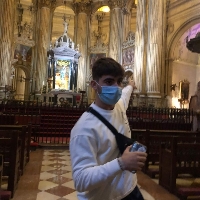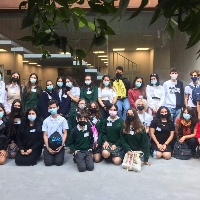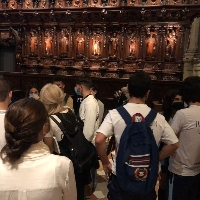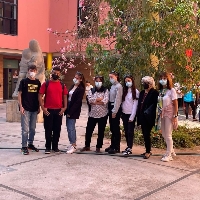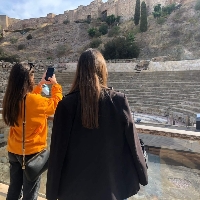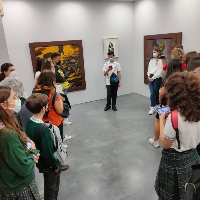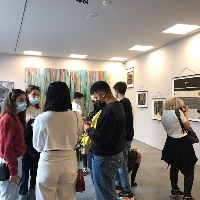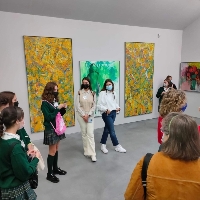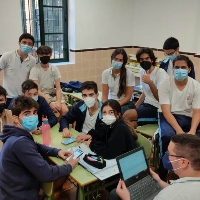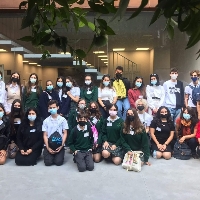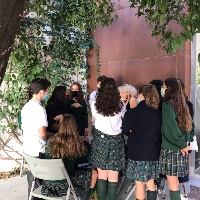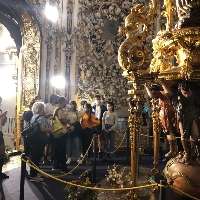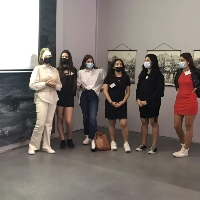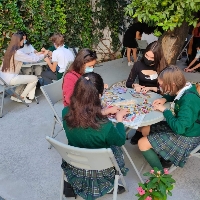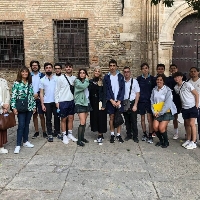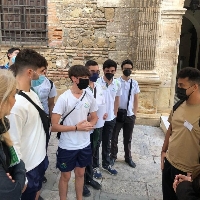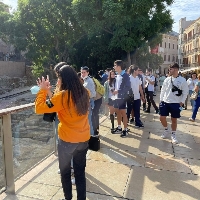HEROES Learning Teaching Training Activities (LTTA) in Malaga October 2021
The Learning Teaching Training Activities (LTTA) in Màlaga for the European testing of the HEROES Model took place between October25th and 29th, 2021, involving six students of the Marco Polo Institute from the grade 5A -5D - 5E classes and different groups of Spanish students coming from the local schools Cardenal Herrera Oria, Santa Rosa de Lima and San José, who previously participated to the local testing phase.
Over all the Italian students enjoyed their experience in Malaga and were happy about the trip in general. They came home enthusiastic about their wonderful days spent in the Spain, partially due to the fact of finally being able to travel after the past year in remote learning. None of the students had ever participated in an Erasmus Project, either and most of all they appreciated the generous hospitality and kindness of their Spanish colleagues.
The Cathedral of Malaga, the Sanctuary of the Virgen de la Victoria and the Jorge Rando Museum were the three scenarios of the historical-artistic heritage of Malaga chosen by the Spanish partner to carry out the peer educational activities based on the principles of the HEROES Model. The whole educational program was complemented by further study visits including the Faculty of Educational Sciences of the University of Malaga and many other museums and places of artistic interest such as: the Carmen Thyssen Museum, the historical city center with the Alcazaba and the Roman theatre, the Centre Pompidou, the Muello Uno, and the Picasso Museum.
Supported both by the UMA staff and by the teachers of Plastic and Visual Education Victoria Márquez and Lola Sánchez, who followed also the local field testing, the students of the 2nd year of Bachillerato of the Cardenal Herrera Oria School led the Italian ones to the Cathedral of Malaga and to the Sanctuary of Santa María de la Victoria, showing them the technical and historical-artistic elements of both monuments and introducing their Florentine peers to the understanding of the popular fervor of the Malaga Holy Week. The activities proceeded with different sessions at the Jorge Rando Museum: in the first one the students of the Santa Rosa de Lima presented to their Italian peers the work of the neo-expressionist living artist, to who the homonymous museum is entitled, while in the second one the students from the San José school showed and explained their work – an art installation made by recycled paper modules - on the concept of interculturality that they realized during the Spanish local testing of the HEROES methodology. The installation uses the geometric figures as metaphor of the different religions which can coexist together forming a resistant and perfectly balanced structure, whereby many fragile single elements can constitute a strong integrated body, if they stay peacefully together. The peculiar assembling of the paper shapes constituting the installation, indeed, is strong enough to support a person's weight, symbolizing the strength and the energy of interculturality.
To close the session, the Italian students - flanked by those of the San Josè - experienced the construction of the particular recycled paper modules used to build the installation, working together in the courtyard of the Jorge Rando Museum's centenary mandarin tree.
For their part, the students of the Marco Polo Institute showed the video they made during the local testing phase in Italy on how they understand and narrate the cultural heritage of their city in theatrical form, based on the Tesoro dei Granduchi collection of the Galleria Palatina in Florence in a concrete peer educational exchange.




